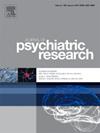用于预测儿科医院患者攻击行为和工作人员伤害的筛选工具
IF 3.7
2区 医学
Q1 PSYCHIATRY
引用次数: 0
摘要
很少有临床工具可以预测由于患者相互作用(api)导致的隔离/约束事件(SREs)或工作人员伤害风险最高的患者。我们研究了“高风险通知”(HRN)工具的效用,以主动识别入院时SREs和api风险最高的患者。我们还评估了初始SRE事件如何影响后续风险。方法采用HRN工具,2166例患者(女性61.3%;平均年龄13.5岁),在2969例入院患者中被分类为HRN +或HRN−。我们计算了每100个患者日的SRE和API发病率,并估计了入院时HRN +状态导致的SRE和API的比例。为了检验SRE/API对后续事件的影响,我们使用随机住院效应的逻辑回归,将SRE和API的每日风险建模为前几天SRE或API的函数。结果shrn +患者占入院患者的5.6%,但占api的50%(9.55 / 100天),占SREs的45%(28.7 / 100天)。HRN−患者(入院的94.4%)的发生率显著降低(每100天1.56个api和5.69个SREs)。HRN+和HRN -患者在首次事件发生后SRE和API的风险均显著增加。有既往事件的HRN +患者再次发生SRE或API的可能性分别为19倍和26倍。在HRN -患者中,超过90%的后续事件发生在初始SRE/API事件之后,而HRN +患者中67%的后续事件可归因于首次事件。HRN工具确定了5%的患者为SRE和API的50%负责,分析强烈表明,预防初始SRE/API可显著减少高风险和低风险患者的重复事件。HRN工具在预测和预防SREs和api方面显示出前景,允许有针对性的安全干预,可以减少复发事件,提高工作人员和患者的安全。本文章由计算机程序翻译,如有差异,请以英文原文为准。
Screening tool for predicting patient aggressive behavior and staff injury at a pediatric hospital
Introduction
Few clinical tools predict patients at the highest risk for seclusion/restraint events (SREs) or staff injury due to aggressive patient interactions (APIs). We examined the utility of a "high-risk notification" (HRN) tool to proactively identify patients at admission at greatest risk of SREs and APIs. We also assessed how initial SRE events influence subsequent risk.
Methods
Using the HRN tool, 2166 patients (61.3% female; mean age 13.5 years) across 2969 admissions were classified as either HRN + or HRN−. We calculated SRE and API incidence rates per 100 patient-days and estimated the proportion of SREs and APIs attributable to HRN + status at admission. To examine the influence of SRE/API on subsequent events, we used logistic regression with random hospital-stay effects, modeling daily risk of SREs and APIs as a function of SREs or APIs on previous days.
Results
HRN + patients made up 5.6% of admissions but accounted for >50% of APIs (9.55 per 100 days) and >45% of SREs (28.7 per 100 days). HRN− patients (94.4% of admissions) experienced significantly lower rates (1.56 APIs and 5.69 SREs per 100 days). Both HRN+ and HRN− patients had significantly increased risk of SRE and API after their first event. HRN + patients with prior events were 19 and 26 times more likely to experience another SRE or API, respectively. Among HRN− patients, over 90% of subsequent events followed an initial SRE/API event, while 67% of subsequent events for HRN + patients were attributable to a first event.
Discussion
The HRN tool identified <5% of patients as responsible for ∼50% of SREs and APIs and analyses strongly indicate that preventing initial SRE/API significantly reduces repeated events for both high- and low-risk patients. The HRN tool shows promise in predicting and preventing SREs and APIs, allowing for targeted safety interventions that could reduce recurring events and improve staff and patient safety.
求助全文
通过发布文献求助,成功后即可免费获取论文全文。
去求助
来源期刊

Journal of psychiatric research
医学-精神病学
CiteScore
7.30
自引率
2.10%
发文量
622
审稿时长
130 days
期刊介绍:
Founded in 1961 to report on the latest work in psychiatry and cognate disciplines, the Journal of Psychiatric Research is dedicated to innovative and timely studies of four important areas of research:
(1) clinical studies of all disciplines relating to psychiatric illness, as well as normal human behaviour, including biochemical, physiological, genetic, environmental, social, psychological and epidemiological factors;
(2) basic studies pertaining to psychiatry in such fields as neuropsychopharmacology, neuroendocrinology, electrophysiology, genetics, experimental psychology and epidemiology;
(3) the growing application of clinical laboratory techniques in psychiatry, including imagery and spectroscopy of the brain, molecular biology and computer sciences;
 求助内容:
求助内容: 应助结果提醒方式:
应助结果提醒方式:


